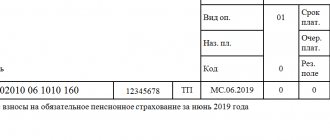Attachments to the supply agreement. Specification concept
A supply agreement, concluded primarily between business entities, can have many different applications, including:
- forms of purchase requests or shipping orders;
- delivery schedules;
- price agreement acts;
- price lists;
- additional agreements on changing or supplementing some conditions, etc.
However, most often, when it comes to an appendix to a supply contract, the parties have in mind the specification. This will be discussed further.
You can find more complete information on the topic in ConsultantPlus. Full and free access to the system for 2 days.
Important! The concept of a specification can be defined as follows: it is a document for one batch of goods, drawn up and signed by the supplier and the buyer, containing the essential terms of the supply agreement, as well as other conditions necessary for the fulfillment of obligations by the parties.
You will find more detailed information about the essential terms in the article “What are the essential terms of the supply agreement under the Civil Code of the Russian Federation?”
How to draw up a supply agreement: sample 2020
The agreement is drawn up in simple written form; it can be concluded by exchanging documents with the other party through postal, telegraphic, teletype, telephone, electronic or other types of communication.
According to the legislation of the Russian Federation, when filling out a supply agreement template, you should pay attention to the following points:
- The party that receives objections to the terms of the transaction must take measures to reconcile them.
- A 30-day period has been established for agreeing on the relevant conditions, unless another period is determined by the parties.
- A party that has received an offer to agree on the terms and conditions and considers the agreement inappropriate must, within the same period, notify the other party of its refusal to conclude the contract.
Application of specifications in relations for the supply of goods
Participants in economic activities who decide to enter into an agreement among themselves for the supply of goods can determine the subject of the agreement as follows:
- Directly in the text of the contract itself, listing the names, quantities, and, if necessary, price and other indicators of the goods.
- In a separate document, to which the parties give the status of an integral part of the main agreement.
The first option is more often used in cases where a one-time delivery occurs between the parties, and the number of items supplied is small, which makes it possible to list them in the contract itself. In such a situation, the use of the specification is not necessary.
The second method of determining the subject of the contract and its other terms is used both for one-time deliveries (when the list of goods is too large) and for long-term relationships based on a framework agreement. In this case, the contract itself does not contain essential delivery conditions, but it necessarily makes reference to the fact that essential and other conditions will be agreed upon by the parties in a separate document (annex to the contract).
Note! In the latter case, the role of the specification is enormous: it carries essential delivery conditions, and therefore its approval by the parties is mandatory.
Procedure for registration and forwarding
When preparing and developing a document, you need to pay attention to several important nuances:
- Since the form is free-form, it is best to choose a letterhead for it.
- The law does not prohibit the use of electronic versions of a document along with paper ones, but only if they are signed with electronic digital signatures.
- It is always issued in two copies - one each for the supplier and the buyer.
- Corrections and blots are not allowed. However, they can be supplemented, as well as the previous ones can be terminated and new ones made.
- They are stored together with the contract and are valid indefinitely - until the actual fulfillment of the given conditions, i.e. delivery of relevant goods in the described quantities and on time.
At the same time, you can transfer it either by hand or with the help of:
- email (if electronic signatures are available);
- Russian Post (it is better to send by registered mail);
- courier mail (based on the “door to door” principle);
- They transmit via fax much less often, since this technique is less common, and besides, for transmission by fax, it is necessary that the contract provides for this possibility.
NOTE. If the company has recently started supplying goods, it is better to immediately develop an appropriate uniform form, according to which all such documents will be drawn up.
https://youtu.be/OzdUAvI75so
Sample Specification
A sample of the application in question can be taken from the Album of Unified Forms, approved by Decree of the State Statistics Committee of Russia dated December 25, 1998 No. 132 (form TORG-10).
Considering that this unified form is not mandatory for use, the supplier and buyer have the right to develop and agree on their own.
Necessary data that such a form should include:
- Application number and name (specification, etc.).
- Date of document creation.
- Name of supplier and buyer.
- An indication of the persons who are authorized to sign the specification and a link to the document on the basis of which they have this authority.
- Information about the supplied product (name, quantity, cost, weight and other characteristics).
- Details and signatures of the parties, seals, as well as other necessary information at the discretion of the counterparties.
Important! The specification must necessarily contain a reference to the supply agreement (its date, name and number) to which it relates. Otherwise, there is a high risk that this specification will be recognized as a one-time sales transaction concluded outside the scope of the supply agreement.
An example of a specification can be downloaded from the link: Sample annex to a contract for the supply of goods.
Who makes up
The responsibility for drawing up the default lies with the supplier. The document is studied by the buyer and signed either at the time of execution of the contract, or later, upon completion. As a rule, the supply agreement provides for the repeated provision of such services. Therefore, the text of the agreement itself does not change, but only the addition of new positions that are relevant for current situations.
In the supplier company, its development is usually carried out by the head of the department (or manager) whose competence is in charge of this issue. By law, any employee can take on such responsibilities. Therefore, the only requirement is a sufficient level of competence for such work.
This is interesting: Sample contract for furniture manufacturing
Framework agreement and specifications for it
The supplier and buyer have the right to enter into an agreement for the supply of goods with open terms, which will determine only the general conditions of their future relations, without specifying the subject of delivery. The parties can clarify the latter later by concluding an additional agreement, signing a specification or agreeing on another document (see Article 429.1 of the Civil Code of the Russian Federation).
The courts also interpret as a framework agreement, called a supply agreement and not containing essential conditions, but providing for multiple deliveries of goods with the definition of their type and quantity in separate documents (see the decision of the Arbitration Court of the Ulyanovsk Region dated December 25, 2017 in case No. A72-12942/ 2017).
Note! The specification concluded under the framework agreement is, in fact, a supply agreement, since it is in it that the parties determine the essential terms of the agreement (see the resolution of the Second AAS dated May 25, 2018 in case No. A17-10001/2017).
The annex to the supply contract, which agrees on the subject of the contract, does not necessarily have to be called a specification. Counterparties have the right to agree on essential terms in another document, which will also become a separate supply agreement concluded under a framework agreement. For example, the court recognized fueling statements as such (see the resolution of the Arbitration Court of the West Siberian District dated March 6, 2018 in case No. A75-16170/2016).
Examples of drawing up a supply contract based on a contract form (template)
Based on the sample, you can draw up any supply agreement. Here are some examples of the design of individual provisions of the document based on the specifics of the relationship:
- Regarding the periods of delivery of goods.
According to paragraph 2 of Art. 508 of the Civil Code of the Russian Federation, the delivery document may indicate both the delivery period and the delivery schedule along with the period.The parties may prescribe one of the following options:
- The Supplier undertakes to deliver the goods by “____”___________ 20___ inclusive.
The Supplier undertakes to deliver the goods until “____”___________ 20___ inclusive according to the following schedule:
- In relation to calculations for the delivery of a product set.
| Delivery time | Scope of delivery |
| 1st decade (“____”_________ 20___ — "_____"____________ 20___) | ____ units of goods |
| 2nd decade (“____”_________ 20___ - "_____"____________ 20___) | ____ units of goods |
| 3rd decade (“____”_________ 20___ — "_____"____________ 20___) | ____ units of goods |
In addition to the ten-day schedule, the schedule can also be daily, hourly, or based on other time periods (for example, weekly).
According to paragraph 3 of Art. 516 of the Civil Code of the Russian Federation, if parts of the goods included in the kit are supplied, then payment is made according to one of 2 options:
- General rule: the buyer transfers the amount of ___________ to the supplier within ____ days from the date of delivery of the last part of the kit.
- Special rule: the buyer transfers to the supplier an amount of ___________ within ____ days from the date of ___________________________ (a different principle is established than payment after shipment/selection of final components).
Risks of lack of specification as an annex to the supply contract
If the supplier and buyer do not sign the specification for the supply contract, in which essential terms must be agreed upon, then the following consequences are possible:
- A one-time supply agreement will be recognized as not concluded.
- The framework agreement will not be recognized as unconcluded, and the parties may bring claims against each other under it.
- If the delivery of goods was actually made, but on the basis of other documents, the court may qualify such relations as a one-time purchase and sale (see, for example, the decision of the Arbitration Court of the Voronezh Region dated 02/09/2018 in case No. A14-16345/2017).
- If such other documents contain references to the supply agreement, the court may qualify them as concluded within the framework of such an agreement (see the decision of the Arbitration Court of the Voronezh Region dated February 27, 2018 in case No. A14-24019/2017).
Conclusion! Thus, in order to avoid possible disputes, it is still recommended to sign the specification for the contract. In this case, it is necessary to provide for mutual references: in the contract - to the specification as an integral annex to it, and vice versa, in the specification - to the contract to which it is concluded. These actions minimize possible risks.
***
Thus, an appendix to a supply agreement, be it a specification or another document in which all essential terms are agreed upon, is a necessary document to confirm not only the fact of concluding an agreement, but also the possibility of applying the terms of the agreement, of which this appendix is an integral part, to the relations of the parties.
Some nuances of judicial practice regarding the execution of a supply agreement
The following practice points deserve attention:
- On the redundancy of supply agreements. Concluding supply agreements can be considered an abuse of right if the buyer creates artificial debt in order to start a bankruptcy case (decision of the Supreme Court of the Russian Federation dated June 1, 2016 No. 305-ES16-2411 in case No. A41-48518/2014).
- Energy and water supply contracts. Agreements are concluded on the basis of standard forms. Courts reject claims for settlement of disagreements unless the plaintiffs prove that the supply contracts submitted for conclusion contradict the current regulation (Decision of the Supreme Court of the Russian Federation dated March 28, 2017 No. 306-ES17-1474 in case No. A12-12304/2016).
- Resolution of disputes under supply contracts. It is possible to establish arbitration clauses. If a party does not agree with such procedures, then objections should be raised both at the stage of agreeing on the draft agreement, and in the future, if a clause is nevertheless included. The absence of objections prevents an appeal against the compulsory execution of such decisions in supply disputes (decision of the Supreme Court of the Russian Federation dated June 20, 2016 No. 309-ES16-5870 in case No. A07-17859/2015).
- Place of receipt of goods. If the agreement provides for a selection - the place of receipt of the goods coincides with the location of the seller, then he is considered to have fulfilled his obligations if he provided the goods at the disposal of the counterparty on time (clause 8 of Resolution No. 18).
With deferred payment
One of the possible terms of the supply agreement may be a deferred payment. This option provides for the actual transfer of property to the acquirer, and, by agreement of the parties, the transfer of ownership of the goods. These provisions must be regulated in detail by the terms of the contract.
Note! Deferred payment under a supply agreement is a specific type of sale of property on credit. However, in this case, the parties do not necessarily have to provide for the provision of additional payments in the form of interest.
When preparing the agreement, special attention should be paid to the provisions on payment terms, in case of violation of which the supplier has the right to forcefully collect the debt.
In practice, this option for drawing up a contract is used in cases where the buyer sells the delivered goods, and the payment is made from the proceeds from the sale. This situation carries certain risks for the supplier, who transfers the property under the obligation of future payments.
Contract for the supply of goods with deferred payment
https://youtu.be/47fYu98lgRI
Which court should I go to when there is no payment for delivery?
If a written complaint does not produce results, the issue must be resolved in court. The procedure for collecting money for the supply of goods begins with filing a statement of claim.
It must be sent to the arbitration court at the location of the defendant, in this case the buyer, provided that the parties have not agreed on the contractual jurisdiction for resolving disputes.
The claim must clearly indicate the claims and the grounds on which they arose, with references to the articles. You can use the link to claim.
The following documents must be attached to the statement of claim, which confirm the validity of the claim and the recipient’s failure to fulfill obligations:
- Supply contract
- Receipt for sending a letter of claim
- Invoice
- Receipt for payment of state duty and other court fees
- Invoices and all shipping documents
- Certificate of compliance with the configuration
- Notice of filing a claim with the debtor
Documents must be submitted in original or a duly certified copy. If the claim is drawn up correctly and the court has all the documents confirming the validity of the claim, then a court hearing is scheduled.
Refusal to consider the case (leaving it without progress) means that not all documents were collected or the claim does not comply with established standards.
Important! Determine specifically your legal position during the trial. It must be supported by documents.
It is necessary to provide facts that confirm your fulfillment of obligations and the violation of contractual terms by the defendant. To do this, it is better to use the services of a professional lawyer.
How to receive payment for the delivery of goods
To begin with, a few disclaimers should be made. The form and method of payment are agreed upon by the parties when concluding the agreement.
As a rule, if a product is supplied in several batches, then settlement with the supplier occurs after delivery of the last batch. If you are a supplier, don't panic early when not everything has been delivered.
If the delivered goods were incomplete or of poor quality, the recipient may also not pay for the delivery until the seller provides the recipient with the goods of proper quality.
Therefore, you need to clearly understand that, for its part, the supplier has fulfilled all obligations.
If the recipient refuses to pay for the delivered item, it is necessary to determine the reason for the refusal.
There are two of them:
- Poor financial situation of the recipient
- Intentional delay in payment
If the recipient voiced the first reason, then we assess its seriousness: either these are temporary difficulties, or bankruptcy proceedings have been opened for the recipient. In this case, you should immediately go to court to have you included in the list of creditors. Otherwise, you may be left without payment at all.
Delaying payment is a less important reason. But it should be understood that most likely the debtor uses the supplier’s funds for his own purposes. Therefore, you should not delay in repaying the debt for delivery.









